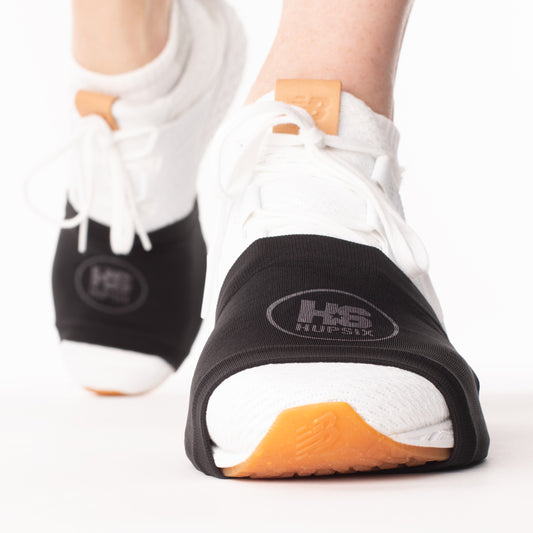
Is Barre a Cardio Workout? (Here’s the Science)
Quick Answer:
No. Barre is strength and mobility, not cardio. Barre builds posture, balance, and core strength — but it doesn’t count as cardio. To train your heart and lungs, you need sustained, moderate-to-vigorous effort. That’s what Dr. Kenneth H. Cooper — the “Father of Aerobics” — proved over 50 years ago in the research that shaped modern exercise science.
Barre is valuable. But it won’t give you the cardiovascular benefits proven to protect your heart and extend your life.
What Real Cardio Is — And Why It Matters
Cardio isn’t about “feeling the burn” or leaving class sweaty. It’s about sustained activity that makes your heart and lungs adapt.
According to CDC and American College of Sports Medicine (ACSM) guidelines, cardio means:
- Moderate effort: 30–45 minutes, 5 days a week
- Vigorous effort: 20–30 minutes, 3 days a week
- Target zone: 60–85% of your max heart rate for at least 20 minutes
Dr. Kenneth H. Cooper’s research shows this type of training:
- Improves cardiovascular endurance
- Lowers disease risk
- Can add nearly nine years of healthy life expectancy
That’s why cardio is the foundation of health — not optional.
Does Barre Count as Cardio?
Short answer: no.
Barre feels hard because of the muscular burn, but physiologically it doesn’t deliver the sustained aerobic demand your heart needs.
-
Short bursts, not steady effort: Movements are broken up by pauses and position resets.
-
Small muscle focus: Lots of isometrics and pulses. Good for strength, but low cardiovascular load.
- Heart rate too low, too brief: Even in “cardio barre,” intensity spikes but don’t hold long enough for adaptations.
This isn’t opinion — it’s exercise science. Without steady time in the aerobic zone, you’re not doing cardio.
The “Cardio Barre” Label (and Why It’s Misleading)
Studios market “cardio barre” classes with faster pacing, lighter weights, and plyometric moves. Sure, those tweaks can raise your heart rate for moments. But science is clear: moments don’t make adaptations.
- You need consistency, not just spikes.
- You need sustained engagement of large muscles, not just pulses.
- You need duration, not just intensity tricks.
That’s why organizations like the CDC, ACSM, and Cooper Institute don’t classify barre as cardio. The name is marketing, not physiology.
How to Tell If Your Workout Counts as Cardio
The easiest way to cut through the marketing hype is to measure it. Here’s what exercise scientists use (CDC/ACSM guidelines):
-
Talk Test: If you can talk but not sing, that’s moderate cardio. If you can only get out a few words at a time, that’s vigorous.
-
Heart Rate Zones: Moderate = 65–75% of max HR. Vigorous = 76–96%. Example: if your max HR is ~180 bpm, you’d need to hold 117–135 bpm for moderate.
- RPE Scale (Perceived Effort): On a 0–10 scale, cardio should feel like 3–4 (moderate) or 5–7 (vigorous).
The key is duration. You need to sustain these levels for at least 20 minutes to trigger aerobic adaptations.
Why Barre Alone Isn’t Enough
Barre can make you stronger and improve posture, but it won’t protect your heart or build endurance.
And let’s be real — barre is expensive. Drop-in classes and memberships cost serious money. Your time and your money are valuable. Why waste them on something that doesn’t do the one thing proven to extend your life — cardio?
-
Heart disease is still the #1 killer worldwide.
- In the U.S., one person dies from it every 34 minutes.
- Heart attacks among adults 18–44 have risen 66% since 2019 (American College of Cardiology).
That’s not solved by pulses at the barre. Cardio is non-negotiable. Like Pilates and yoga, barre is supplemental — not cardio. Is Pilates Enough Exercise? | Is Yoga Enough Exercise?
What Barre Is Actually Good For
- Postural strength
- Balance and stability
- Mobility and range of motion
- Mind–muscle connection
Barre is great supplemental work. But it’s not the foundation of your health.
The Missing Piece: Active Meditation Through Cardio
Barre might calm your mind through slow, controlled movement — that’s passive meditation. But if you want real stress relief, better sleep, and sharper focus, you need active meditation: moving, sweating, and tiring yourself out so your body and mind actually reset.
That’s what cardio delivers.
Why HupSix Fills the Gap
If you want the cardio benefits but hate treadmills, bikes, or endless machines, HupSix gives you what barre doesn’t.
Most HupSix users in class one record about 13 minutes moderate and 15 vigorous. By CDC and ACSM standards, vigorous counts double — so that’s the equivalent of 43 minutes of cardio in just 30 minutes.
That means you’re not only covering your heart-health requirements, you’re also saving time and money compared to paying for classes that don’t deliver the cardio your body actually needs.
-
Fast-paced: 30 minutes of structured cardio in a learn, practice, execute format
-
Music-driven: Original rock keeps you locked in and engaged
- Full-body: Builds strength, coordination, agility, and reaction time — while your heart does the work
It’s treadmill-level cardio — without the treadmill.
Bottom Line
Barre is valuable. But it’s not cardio.
If you want long-term health, endurance, and resilience, you need consistent cardio. Use barre for posture, mobility, and strength — but make sure your heart gets the training it actually needs.
FAQ
Q: Is barre considered cardio?
No. Most classes don’t sustain moderate or vigorous intensity long enough.
Q: Is barre cardio or strength?
Primarily strength and mobility. Not cardio.
Q: Does Pure Barre count as cardio?
No. It’s strength and endurance work, not aerobic training.
Q: Is barre a good cardio workout?
It’s good exercise, but not good cardio.
Q: How often should I do cardio if I also do barre?
About 30–45 minutes of moderate cardio five days a week, or 20–30 minutes of vigorous cardio three days a week.
Q: What is cardio barre?
A studio label for faster-paced barre that may raise your heart rate for short bursts. But research shows it rarely sustains the aerobic intensity needed for cardiovascular benefits.
Still Not Sure?
Skip the guesswork. Track your effort with a heart rate monitor — or try HupSix: a guided, 30-minute cardio workout that actually trains your heart.
Try it. If it’s not one of the most effective, engaging workouts you’ve ever done, send it back — full refund, no questions asked.


